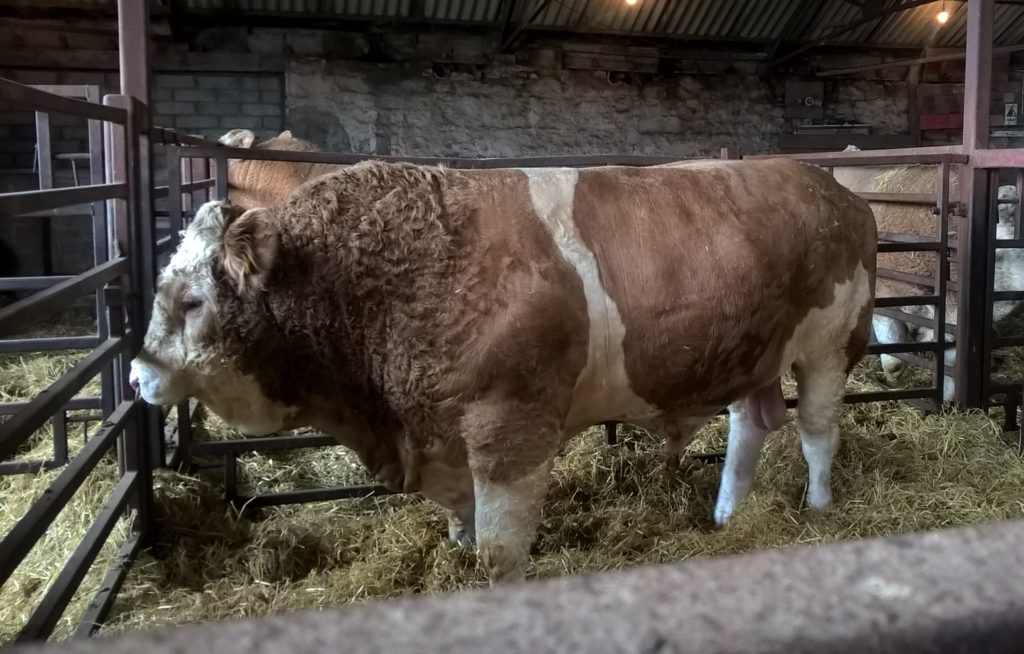Bull Buyers Checklist
18 December 2018For those who are intending purchasing bulls at this year’s spring bull sales the following should give you helpful pointers to help with the decision making process. Careful considerations should be made to make sure that you buy the bull that is right for you and your herd.
Buy in advance of the breeding season
Bulls should be bought in advance of when they are actually required.
- February sales – later spring use
- May sales – autumn use
- Autumn sales – early spring use
This gives time for your new bull to settle in and allows adequate time for you to adjust his diet so that he is in working condition when he is put in with the cows.
Decide what criteria and or Estimated Breeding Values (EBVs) you’re looking for
What you look for in a bull and what EBV’s matter to you will vary depending what your bull is used for. Is he a terminal sire or will he be used to breed replacements? If you sell stores or finished cattle will also influence your criteria. For those of you selling store or weaned calves then good growth rates at a young age will be important but for finishing cattle the 400 day weights will be what’s important. For breeding heifer replacements you’ll be focusing on milk production and calving ease. It’s good to know what you want from your bull.
Get the catalogue before the sale
Most marts nowadays have the catalogue available to view online in advance of the sale. If you don’t have access to the internet then ask for a catalogue to be sent to you. Seeing the catalogue before the sale allows you to take time to consider the bulls that are going to be offered for sale (remember at these bigger sales there are a lot of buyers all trying to look at bulls). You can draw up a list of bulls that on paper have what you are looking for.
Read the health declaration
Another reason for seeing the catalogue before the sale day is so that you can fully read the health declaration. Most breeders will have pen cards displaying their herd status on the sale day however these can be difficult to study on sale day with bulls and people moving in and around pens.
At the sale select a short list by eye
By now (assuming you’ve had access to the catalogue) you should have an initial shortlist of bulls. However visual appraisal is extremely important as an EBV cannot tell you about locomotion, correctness, soundness, condition or size etc. Ideally you should try and be there on the show day. An extra day at the bull sales can often be justified and will allow you more time to see the bulls out their pens and access their locomotion. You can make comparisons between bulls during judging. This can save a lot of time on sale day going back and forth between pens trying to make comparisons between bulls. Using a combination of EBV’s and your eye will give you the best chance at getting the right bull for your herd.
After visual assessments make a final shortlist of the bulls you will bid for.
Set a price limit
It’s a good idea to have a budget in mind and to have an idea about the price that you are willing to pay when buying a bull. It can be easy to get caught up in the excitement of the sale and pay more than you initially intended. Set a price limit and try to stick to it. Remember there are other sales so do not panic-buy at a sale or you could end up paying over the odds for a bull that doesn’t really suit your needs. Buying the wrong bull has a lasting effect on your herd.
Insure after purchase
It’s important to take out insurance to protect your new bull after purchase. Make sure you know exactly what your bull is covered for (read the policy and insurance documents thoroughly) as breeder warranty may not cover for loss to accident or injury.
Sarah Balfour, Sarah.Balfour@sac.co.uk
Sign up to the FAS newsletter
Receive updates on news, events and publications from Scotland’s Farm Advisory Service

